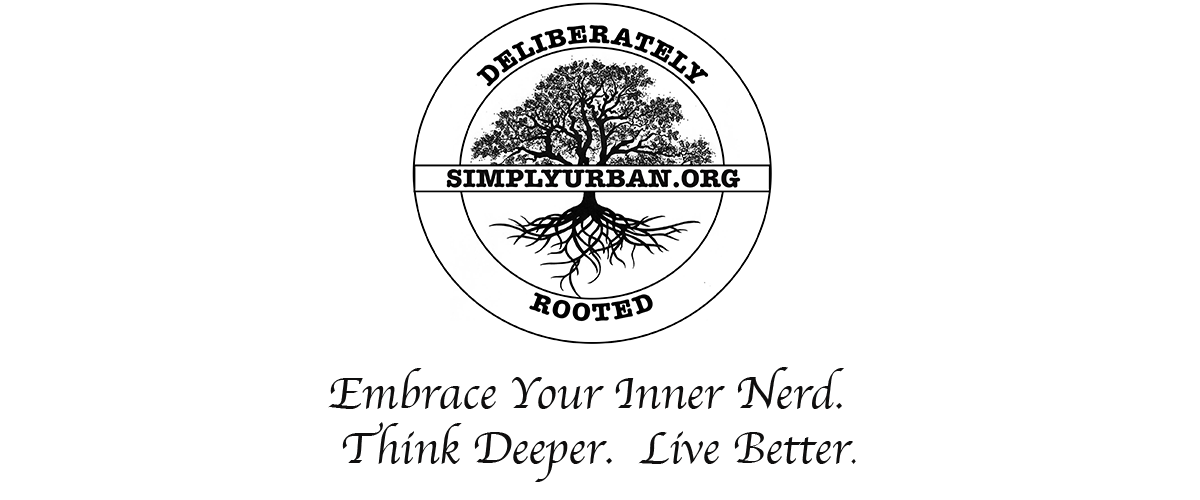Technology Has Changed Everything
Technology is changing everything. For most of human history, we’d gather around campfires to discuss our feelings and the challenges of the day. We’d cook and eat together in the ember glow of a dying fire. Under the stars, we’d tell the stories that defined our shared identity. Today we send text messages, eat microwaved leftovers, and post on social media hoping for approval and validation.
So much has changed. Leveraging machines to replace manual labor dominated the industrial revolution. But, information age technologies will change the very way we think. According to the former head of Google and Alphabet, Eric Schmidt, Artificial intelligence will become cognitive assistants to humans. It will help with information overload. After spending years studying Data Science, Philosophy, and exploring the world, I couldn’t agree more.
This essay begins a series examining cognition and how Data Science technologies will change traditional modes of understanding, specifically addressing information overload. Next, I’ll explore these ideas through a case study of investment research. In this first essay, I’ll discuss traditional modes of cognition exemplified through Christopher Mayer’s popular investment book 100 Baggers: Stocks that Return 100-to-1 and How to Find Them. Finally, I’ll employ Data Science technology to tackle the same problem and explain why certain stocks perform better than others in future essays.
How do you know?
Cognition generates a unified intellectual framework of ideas through synthesizing experience. In other words, cognition constructs a worldview. For example, we learn how to interact with others through childhood play. We know to share our toys by empathizing with the emotional state of others when another steals our toys. We understand how to engage in romantic relationships by observing our parents and watching romantic comedies. We learn how to add and subtract in a classroom by listening to the teacher’s lectures and working through problems in our homework assignments.
But, the information revolution drowned us in information overload. Data Science is still in its infancy. But, it has the potential to sort through the avalanche of information and synthesize a more coherent intellectual framework or worldview.
I’m a pragmatist, so I want to apply Data Science to a particular, quantifiable project. Concretely, I’ll show how to overcome information overload by exploring investments in common stocks. But first, let’s consider a simple example of how we construct an intellectual framework. Consider a hunter 50,000 years ago. One day, he’s out hunting when he crests a hill and spots a deer drinking water from the creek. Before the deer notices him, he quickly nocks an arrow and shoots it. Bringing the deer back to camp, he’s praised as a hero for providing so much food. He feels proud: his friends and relatives praise him as a mighty hunter.
The hunter will probably employ his newly discovered hunting strategy of staying out of sight near a stream on the next hunt. He’ll reason that deer need water and there are a limited number of water sources available.
Unaided Cognition Succumbs to Information Overload
That makes sense. But, the cognitive skills that worked in a hunter-gather society no longer work today, especially in the digital world. Drowning in information overload, we can’t experience the billions of investment data points, or the millions of website clicks the same way the hunter experienced shooting a deer. Thus, our evolved cognitive systems can’t take advantage of this new wealth of information.
Current approaches to addressing information overload primarily focus on summarizing information in more easily digestible forms. Businesses address information overload by creating dashboards summarizing information in graphs or data tables. Dashboards usually allow users to drill down, slice data and export it into other applications for further analysis. News aggregation sites summarize headlines and can alleviate information overload to an extent. Others rely on Facebook’s AI algorithms to summarize points of interest. However, those reliant on Facebook risk being misled by Fake News. Facebook’s intent isn’t to inform but to form addiction, so you spend more and more time on their site engaging with corporate advertisements. In any event, scanning a summary of clickbait headlines misses important nuances.
“You are not entitled to your opinion. You are entitled to your informed opinion. No one is entitled to be ignorant.” – Harlan Ellison
In business settings, machine learning to assist decision-making has not become mainstream for a few reasons. First, the massive task of moving and cleaning data consumes most corporate analytics resources, leaving little bandwidth for more advanced applications. But, that will change as technology improves. Those best able to overcome information overload and successfully apply data to business problems will enjoy significant advantages.
Traditional Analysis
Traditional analysis relies on stitching together a worldview derived from synthesizing experience, mainly from reading or charts and graphs. One reads books, annual reports, newspaper articles, etc. Christopher Mayer’s book 100 Baggers: Stocks that Return 100-to-1 and How to Find Them exemplifies such analysis. First, I’ll examine Christopher’s approach and then apply Data Science to answer the same question.
Christopher, a guy steeped in the school of value investing, conducted a study that purportedly will enable his readers to identify patterns that will signal stocks that will soon experience significant price increases. He began by assembling a database, which turned out to be a massive undertaking. After analyzing this database, he came up with 365 stocks that returned 100 to 1 from 1962 to 2014 and claims to have distilled a predictive framework that will signal the 100 baggers of the future.
Unscientific Study?
To his credit, Christopher acknowledges the shortcomings of his study, saying:
There are severe limitations or problems with a study like this. For one thing, I’m only looking at these extreme successes. There is hindsight bias, in that things can look obvious now. And there is survivorship bias, in that other companies may have looked similar at one point but failed to deliver a hundredfold gain. I am aware of these issues and others. They are hard to correct. I had a statistician, a newsletter reader, kindly offer to help. I shared the 100-bagger data with him. He was aghast. […] However, what I’ll present in this book is not a set of statistical inferences, but a set of principles you can use to identify winners. If you’ve read Michael Lewis’s Moneyball, which looks at the principles behind productive baseball players, you know this is a worthwhile exercise.
Mayer, Christopher W. 100 Baggers: Stocks that Return 100-to-1 and How to Find Them (pp. 9-10). Kindle Edition.
I’m not sure how Christopher likens his study to the statistic-heavy approach depicted in Money Ball while statisticians poo-poo his approach. But, he states his study isn’t scientific, so I applaud his intellectual honesty. Indeed, very few world views are science-based. But, the Data Science approach will overcome these limitations, as I’ll show in later essays.
Conventional Wisdom
Christopher lists conventional value investing wisdom accumulated from giants like Benjamin Graham and Warren Buffet. I find his advice sound and his exposition solid. Nonetheless, he’s not saying anything new nor does he connect these themes to the 100 baggers. He just recites conventional wisdom without providing any data or reason to claim that 100 bagger performance result from these features. These value investing themes strike a cord with experienced investors despite no demonstrable link to the 100 baggers probably causing the fallacy of cognitive bias. I explore the idea of cognitive bias in this essay.

Portrait of Socrates. Marble, Roman artwork (1st century), perhaps a copy of a lost bronze statue made by Lysippos
Synthesis via Traditional Cognition
Christopher explains a set of features that purportedly predict 100-bagger stocks. It seems he uses his experience and reading in an attempt to explain factors that cause 100 bagger performance. Again, I find these ideas compelling and useful in and of themselves but Christopher presents no compelling linkage that this list of conventional wisdom predicts 100 baggers. But, he’s clearly an experienced investor and very well-read. I believe his study is a great example of traditional modes of cognition. He seems to think back to his experience of successful investing and apply them in an attempt to explain 100 bagger performance just as the deer hunter (above) thought about his success hunting deer. The book lists nine or ten characteristics to predict 100 baggers.
Growth, Growth, and More Growth
I love how Christopher peppers his text with the wisdom of great investors. For example, he begins chapter six with a quote from Charlie Munger:
If a business earns 18% on capital over 20 or 30 years, even if you pay an expensive looking price, you’ll end up with a fine result. —Charlie Munger
Mayer, Christopher W. 100 Baggers: Stocks that Return 100-to-1 and How to Find Them (p. 75). Kindle Edition.
The book focuses on the importance of finding companies with an overlap of high Return on Equity (ROE), low price-to-earnings ratio, and sustainable competitive advantages. He compares a sustainable competitive advantage to a castle with a moat. Companies with a sustainable competitive advantage protect their treasure trove of high returns by keeping out competitors with their ‘economic moat.’ I love Christopher’s discussions with others trying to ferret out the best approach.
Jason Donville’s Capital Ideas Fund has been a top performer since inception in 2008. Investing in companies with high and lasting ROEs is the special ingredient that gives his fund such a kick. I called Jason and explained the 100-bagger project and my initial findings. Many 100-baggers enjoyed high ROEs, 15 percent or better in most years. “That’s exactly right, and that’s the kind of stuff we look for,” he said. We fell into discussing his approach and the magic of great-performing stocks.
Mayer, Christopher W. 100 Baggers: Stocks that Return 100-to-1 and How to Find Them (pp. 77-78). Kindle Edition.
The Beauty of the Human Mind
I don’t think this should ever change. The emotional importance of human contact and the power of dialectic cannot be underestimated, as I explain in this essay. However, technological assistance will become invaluable to process and analyze these vast new treasure troves of data.
He breaks ROE into two main capabilities: investing and financing or capital allocation. This is a tautology. He claims, to achieve a great return on your equity, you must invest in companies that provide a great return on their equity. Although true, that statement is pretty apparent and lacks insight, in my opinion. He couples this with the familiar value investing tune of buying companies with a low price-earnings ratio.
The idea that stocks fall into the intersection of high ROE resulting from sustainable competitive advantage and low multiples seems self-evident. But, it will be interesting to see if these things are predictive or if they’ll crumble in the face of hindsight bias.
Great Managers with Skin in the Game
Next, he points out that great companies result from great managers. Again, another tautology. But, this idea certainly isn’t predictive. He provides the example of Steve Jobs and Jeff Bezos as great managers, which would predict 100 baggers. That’s undoubtedly true looking in the rearview mirror, but I don’t think anyone would have thought of them as great managers thirty years ago. Jeff Bezos started Amazon by quitting his job, throwing all his worldly possessions into a U-Haul, and driving cross country to Seattle to start an online book catalog company. Thousands of dudes quit their jobs to start new companies every year. But, almost none of them revolutionized the retail industry and became the world’s richest man.
Apple and Steve Jobs were the dogs of the 1990s. Steve was fired from the company he founded because he had a hard time getting along with others. Apple struggled for decades. Its comeback with the innovation of the iPod and iPhone took everyone by surprise. Good management is essential, but it’s tough to detect early on. Many people claim to have revolutionary ideas. But, Jobs and Bezos are the exception to the rule and couldn’t have been predicted with certainty before their rise to fame.
Pearls of Wisdom
The book is peppered with well-known maxims that he claims to somehow relate to the identification of 100 baggers. Yet, he never explains how or even attempts to present a causal link. He actually eschews statistical analysis at the beginning of the book, which makes this book a quintessential example of traditional analysis. Fair enough, that’s how the human brain works. And it works very well. My point isn’t to trash traditional modes of cognition. Instead, I’m trying to show how new technological assistance can help us wade through the avalanche of data, allowing us to make more informed, fact-based decisions.
Here are some interesting aphorisms from the book:
My experience as a money manager suggests that entrepreneurial instinct equates with sizable equity ownership… If management and the board have no meaningful stake in the company— at least 10 to 20% of the stock— throw away the proxy and look elsewhere. —Martin Sosnoff, Silent Investor, Silent Loser
Mayer, Christopher W. 100 Baggers: Stocks that Return 100-to-1 and How to Find Them (p. 83). Kindle Edition.
If people weren’t so often wrong, we wouldn’t be so rich. —Charlie Munger at the 2015 Berkshire
Mayer, Christopher W. 100 Baggers: Stocks that Return 100-to-1 and How to Find Them (p. 103). Kindle Edition.
I can’t be involved in 50 or 75 things. That’s a Noah’s Ark way of investing— you end up with a zoo that way. I like to put meaningful amounts of money in a few things. —Warren Buffett
Mayer, Christopher W. 100 Baggers: Stocks that Return 100-to-1 and How to Find Them (p. 111). Kindle Edition.
A truly great business must have an enduring “moat” that protects excellent returns on invested capital. —Warren Buffett
Mayer, Christopher W. 100 Baggers: Stocks that Return 100-to-1 and How to Find Them (p. 121). Kindle Edition.
Connecting the Dots
Christopher is clearly a well-read guy. The human brain collects tidbits of information like these and uses them to triangulate our way to a worldview. Interestingly enough, stochastic gradient descent is the artificial intelligence model most closely aligned to how our brains work. Compare and contrast the way Christopher uses his reading and experience to get closer to the truth, as Andrew Ng explains in this video.
Technological Assistance
Traditional modes of cognition involved synthesis from experience, primarily from reading and analyzing tables and graphs. But, new technology creates information overload that

Artificial Intelligence is basically algorithms or formulas able to learn (specifically to self-adjust parameters to obtain optimization objectives). Arnold Schwarzenegger in the terminator pops into most folks’ heads when they think of AI.
But, nothing could be further from the truth. See the above video for a real-life example of AI. The math may seem confusing, and it is complex. But this shows that AI is just math, not a terrifying futuristic robot. There are some examples of machines navigating the physical world, like a Roomba vacuum cleaner. But, Roomba vacuum cleaners aren’t scary. They’re actually very pitiable creatures bumping into everything. Remember cognition depends on synthesizing experiences. And, Roomba’s experience of reality depends on bumping into crap. Building a way for AI to experience and act in the physical world is extremely hard. A consideration of the spiritual and philosophical implications of that would make a great follow-up blog series. But, for now, please understand that hostile AI’s seeking world domination is still very much just science fiction.
What do you think?
Thanks for reading to the end! This blog is my project in the pursuit of truth. I spend dozens of hours researching each blog post, so I hope you found something useful.
Our click-bait culture needs good ideas in an increasingly complex world. That depends on good men and women engaging in intellectually honest discussions, sharing ideas, and challenging each other’s thinking. Writing out my thoughts in detail, along with lots of research, helps me arrive at a more accurate view of truth based on well-documented facts.
If you’d like to support my blog please buy my book. Here’s the link!





2 Comments
Leave your reply.